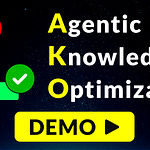In this tutorial, we are going to create our first AIPACK agent, my-agent.aip.
First, we’ll do a quick walkthrough of the prerequisites:
Install AIPACK (the
aipcommand line) from https://aipack.aiStart VSCode in a folder and set the desired AI Providers' API Keys
(optional) Install the optional VSCode AIPACK extension.
Here is the AIPACK-Lab folder for this project.
Then, we will do the hello world example, which has two main sections.
1) Hello World
In the hello world section of the tutorial, we will learn how to:
Create a simple
my-agent.aipwith hardcoded input (in the data# Data) and use debug print in the output (# Output) (without AI - good for debugging).Activate the
# Instructionsection to send the request to AI.Use multiple inputs from the command line with
aip run -i ... -i ....Change the model and use the
-zeroGemini 2.5 suffix to control the thinking budget.Append (
aip.file.append) content to a single file for all concurrent inputs.
3) HTML Optimizer
Then, we will update the my-agent.aip tutorial to learn how we can AI optimize an HTML code documentation page using AIPACK slim HTML and markdown API, forwarding the slimmed markdown content to AI to get a small but semantically rich markdown file.
We will use the following AIPACK APIs:
aip.web.getto get the original HTML content.aip.file.save_html_to_slimto slim the original HTML from 1.5MB to 57KB.aip.file.save_html_to_mdto save the slimmed HTML as markdown (10KB).Craft a custom instruction to have
gemini-flash-2.5-flashstructure and reconstruct the code blocks.aip.md.outer_md_block_or_rawto remove any encompassing markdown code block.
Check out all of the AIPACK Lua APIs Documentation for more information.
Feel free to subscribe to AIPACK Substack at news.aipack.com for more info and tutorials.









